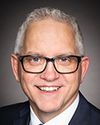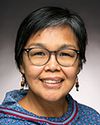Ta néwyap. Hello. My name is Sarah Silva. I am a Squamish Nation member and the CEO of Hiyam Housing Society.
Hiyam Housing Society is an incorporated non-profit society that was created a few years ago by the Squamish Nation to develop and manage culturally appropriate and affordable housing within our community. The Squamish Nation is one of the largest first nations in B.C. We have approximately 4,000 members, most whom live off reserve. We have, of course, like most first nations, a lot of issues around affordability and need. Our current wait-list right now is approximately 30 years' long, with 1,000 people.
I'll speak a little bit about the unaffordability in our region. North Vancouver, Squamish, B.C., and Vancouver are some of the most expensive cities in the world. We're facing a lot of really unaffordable rents that don't align with our income levels. What's currently happening is that a lot of our community members are moving really far away into rural areas, not within our actual communities and reserves. They're paying most of their income on shelter. There's not a lot left over for actual food, education and even heat a lot of the time. That's been a rising issue that we're trying to address by bringing everybody home within a generation.
Another issue, of course, is the poor living conditions in overcrowded homes on and off reserve. Of course, we have the overcrowded situation happening on reserve. We have many different generations living under one roof. What's happening is that a lot of the younger generation don't essentially have another home to move into. There's nothing around that's affordable, so they're continuing to live within the home. We're also seeing not enough funding for renovations and just nowhere to move. A lot of elders are living in condemned homes and mouldy homes, unfortunately, without anywhere to go.
Along with, of course, a lot of the same poor living conditions and overcrowded situations on reserve, we're also facing a lot of discrimination and poor living conditions off reserve as well. We're getting the lower end of the stock, essentially. A lot of people are applying to live in rental units, and we're facing a lot of discrimination. A lot of the time when we get into these units, they're illegal units and they're also mouldy. We don't necessarily have a place to argue for our rights in those landlord situations.
It's been an ongoing issue that we're trying to resolve by creating Hiyam Housing. Essentially, we're an incorporated non-profit, but we're also a housing authority, which is a best practice that's used by a lot of other first nations, in the sense that we can separate housing operations and governance from our leadership and from our council. It has been working, so we have been managing. We have our own governance. We do our own strategic planning, and we're going out for a lot more funding.
We have gotten a lot of funding in the last couple of years. We'll be building three new developments that we're really excited about. We're going to be breaking ground in the next couple of months. That's going to help, but really, the need is great, so it will just help meet a little bit of the need that we have within our community.
We've launched some programs that within the last few years have really helped us. With the market rent supplement program, we offer our residents who are living off reserve a market rent supplement to essentially subsidize their rents. We do have a home ownership program that we launched as well, but we need to have programs in place to allow us to be able to be in a position to save for a down payment. We had huge interest for the market rent supplement. We had about 150. We had about two people for the home ownership.
I think that speaks to the real need in our community. Of course we want to get there and have those programs and the housing in place to get there, but we're dealing with really core need and the need for supportive housing and just regular rent geared to housing as well.
To speak a little bit about the increased poverty levels as well, what we're noticing, of course, is that with the rising cost of housing, it's creating a real income divide between our community and the outside community, but also internally in our community. Unfortunately, without any support, our community hasn't been able to afford a lot of the rents, as I said before.
They're just being pushed further and further away from the community supports that we have.
Another issue that we're noticing as well, as part of our mandate to bring everybody home in a generation, is that we are perpetuating negative colonial impacts through this housing crisis for our community members, including myself.
I was raised in social housing. My mom was Squamish and she raised four children on her own. We moved into social housing very far away from our community. It was the only thing we could afford. We didn't have access to our own school, to our longhouse, to our elders, to our language, to our way of life or to our sports teams and all of that stuff. We were very isolated, and we didn't get a lot of support.
The idea is to really bring our community back, bring back those supports, bring back our way of life and build that up. What's happening without a lot of that housing is that these negative impacts are really getting worse.
Yes, another item is—








